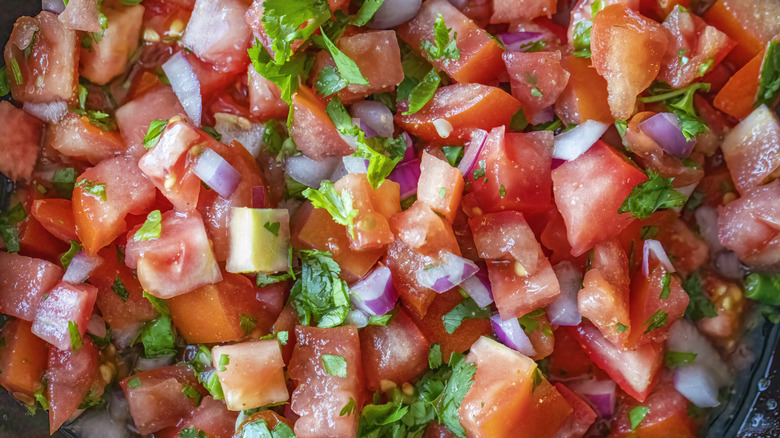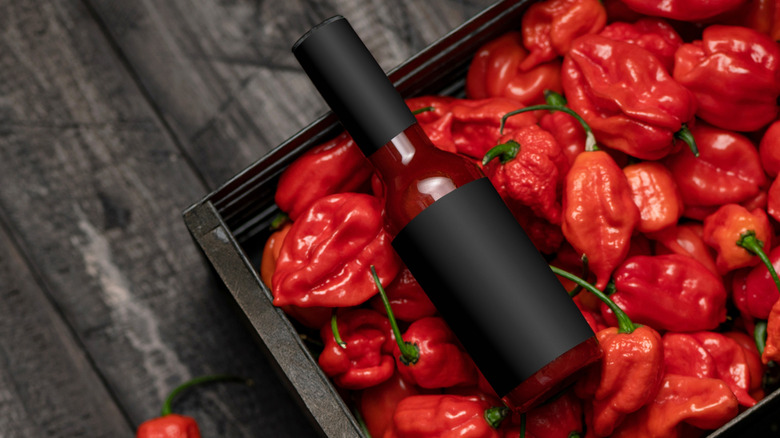We may receive a commission on purchases made from links.
There’s undoubtedly been a steady rise of Mexican food in American culture. In fact, it has gotten so popular that Mexican food makes up 10% of all restaurants in the United States. Many of us have sat down at a Mexican restaurant and been given a bowl of chips with a dish of red sauce that we automatically assume is salsa. However, there’s another sauce option out there that it could be, known as picante.
It’s easy to confuse the sauces: Both are bright red, and both can be spicy. The biggest differences are appearance and spice level. Salsa tends to be chunkier, while picante is more finely ground. Salsa also has a wider range of spiciness, ranging from mild to spicy, while picante tends to be highly spicy.
In the United States specifically, they can be so similar that picante is often thought of as a type of salsa. However, it is worth noting there is also a Mexican picante, the definition of which differs greatly from its American counterpart. Regardless of which definition you follow, one thing is for sure: Both salsa and picante are delicious and can be delightfully spicy.
What is salsa?
Salsa is a tomato-based sauce commonly found in Latin American cuisines. Though it is also used in Mediterranean cuisine, in the United States, we tend to associate it most closely with Mexican and Tex-Mex food. It’s commonly used as a dipping sauce, especially for tortilla chips, or as an accompaniment to tacos, burritos, and other such dishes. This sauce is characterized by its chunky texture, which consists of tomato pieces and other vegetables. Recipes can vary, but popular additional vegetables include corn, chili peppers, jalapeño peppers, onions, and more. Salsa can be as mild or spicy as the cook prefers; the more jalapeños in the recipe, the hotter the sauce.
The word “salsa” simply translates to “sauce” in Spanish; since it’s such a broad word, it can refer to several types of similar sauces. For example, salsa verde is a green variant of salsa which features green instead of red peppers and tomatillos rather than tomatoes — elements that give it a different color in addition to a more tart flavor. There’s also pico de gallo, which is essentially a more roughly chopped salsa with the addition of cilantro.
Salsa can easily be made at home with a blender or food processor, but many opt to simply buy it in stores as there are a number of delicious options available. Some home cooks choose to add extra ingredients like fresh lime juice to upgrade store-bought salsa, giving it a brighter, fresher flavor.
What is picante?
There are two kinds of picante: the American kind and the Mexican kind. The American variety was invented in the 1940’s and is considered a type of salsa. In the United States specifically, picante is also tomato-based, although it uses finely chopped tomatoes, which give the sauce a finer consistency overall. Other typical ingredients in picante are jalapeños, onions, and a variety of spices.
The Mexican variety of picante is made with red chile peppers instead of tomatoes, which means less sweetness and more pronounced chile flavor and heat. The sauce also consists of spices, vinegar, and salt. Unlike American picante, Mexican picante is completely ground up and has a liquid texture with no chunks present. You can easily observe the difference between the two when you compare something like Cholula Hot Sauce to Pace Hot Picante Sauce (American-style picante sauce).
In both cases, the name “picante” means spicy; it is not to be confused with the flavor note piquant, which, despite sounding similar, actually means pungent. Generally, picante is also more focused on adding spice than flavor; salsa, though it can be spicy, tends to provide a broader range of flavors due to its more extensive ingredients list. Both forms of picante are typically an item you pour onto dishes rather than one you dip other foods into.







